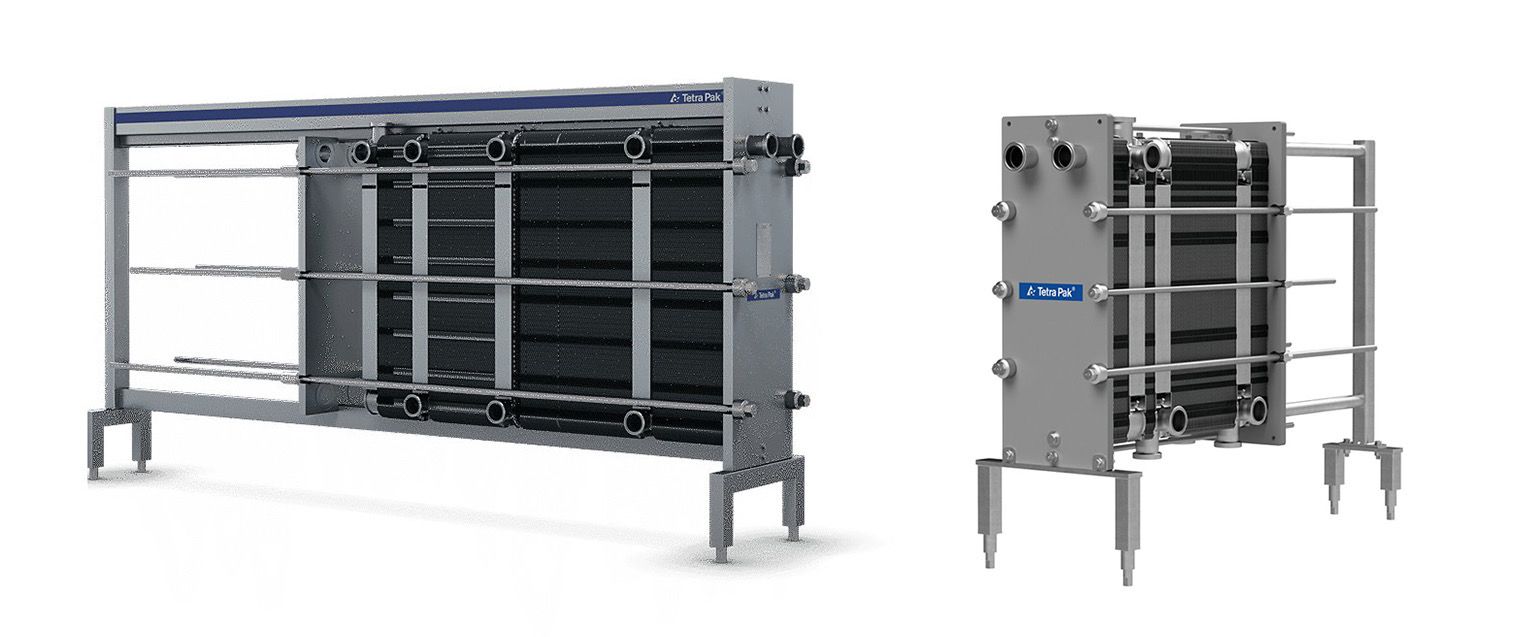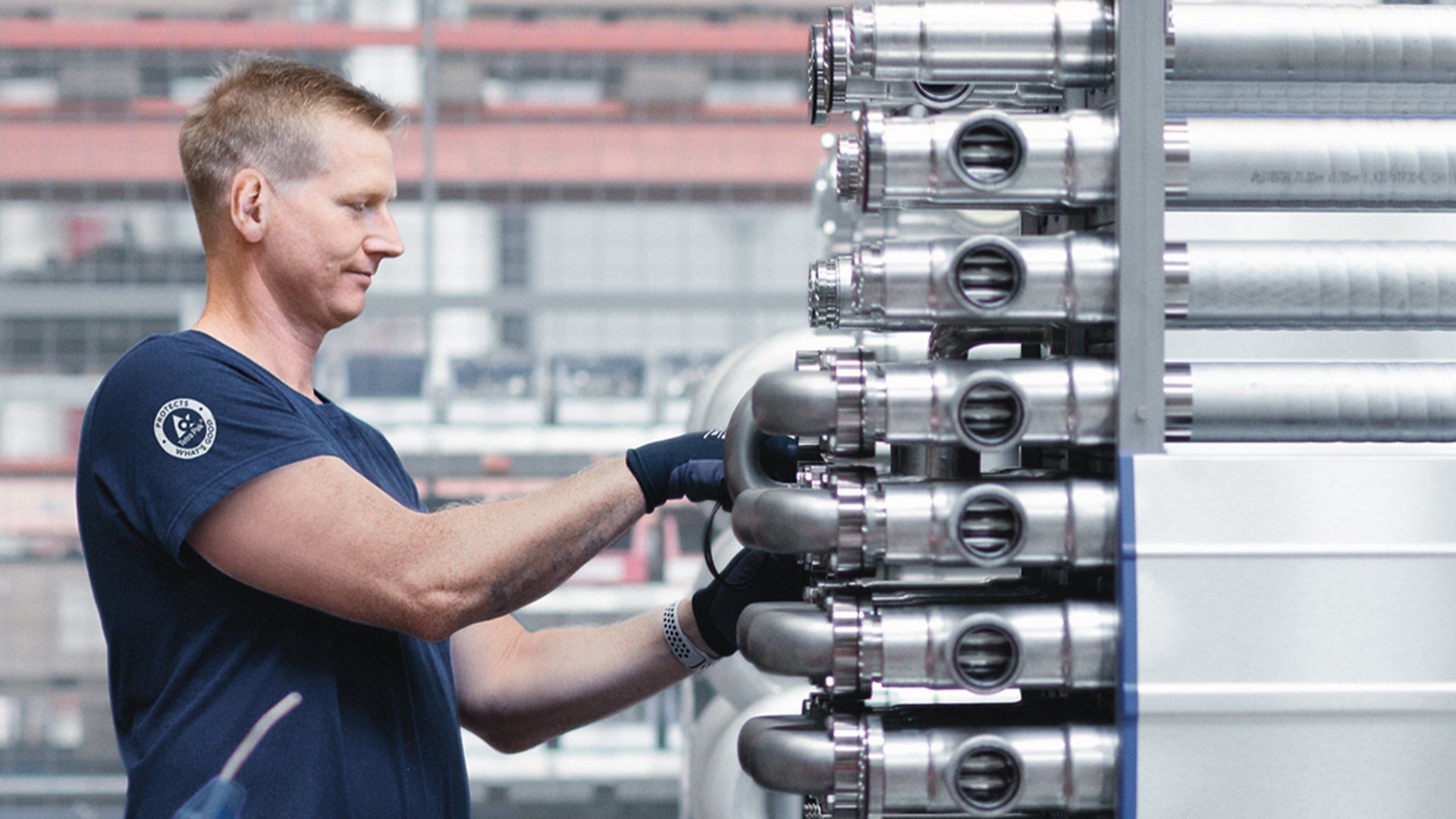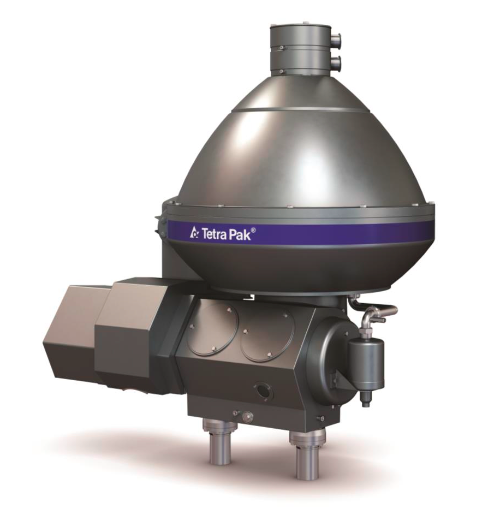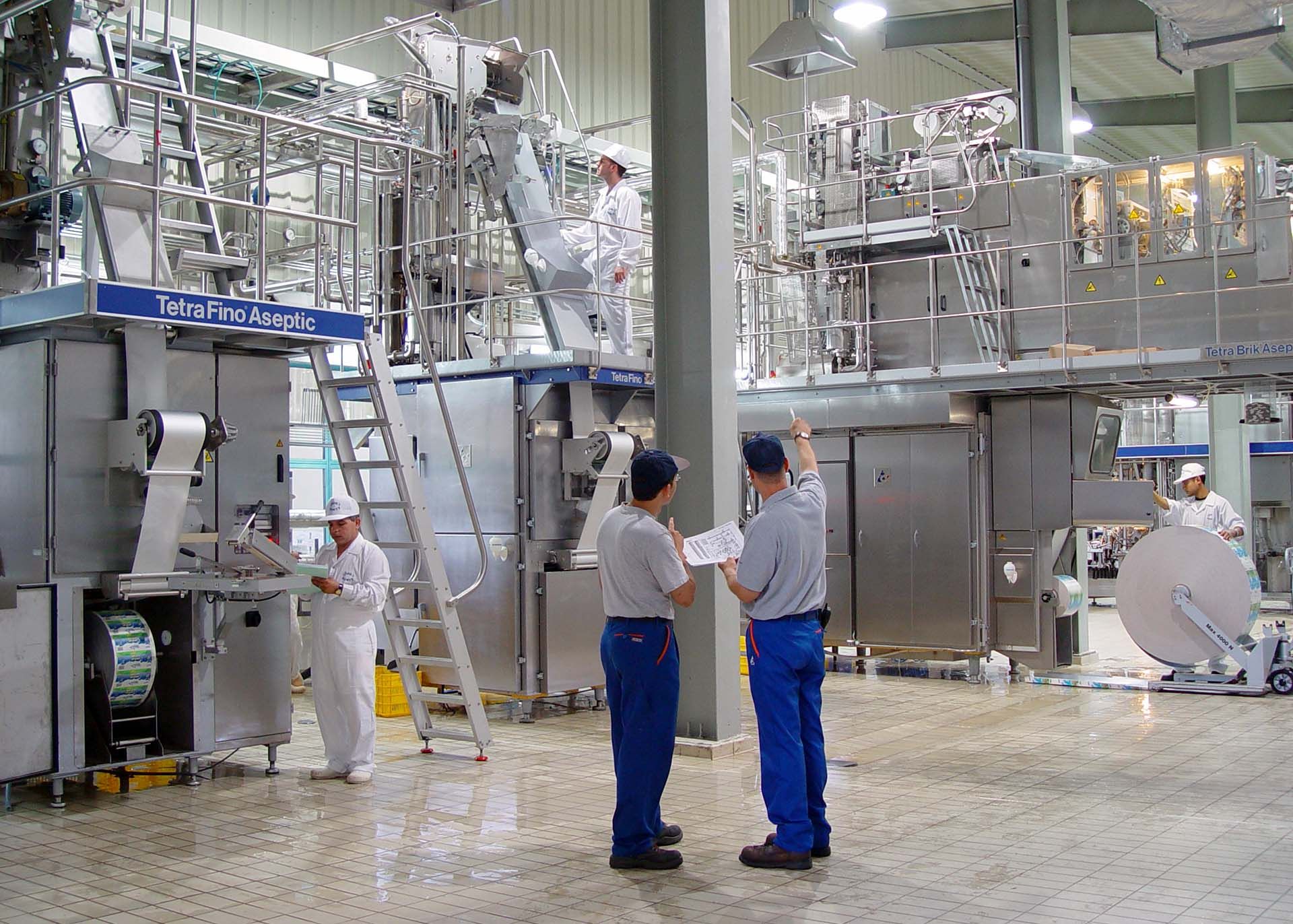
Heat exchangers
At SCHNEIDER INDUSTRIES, we understand that heat treatment is a critical step in food processing. That's why we offer a comprehensive range of Tetra Pak® heat exchangers, including tubular, plate, scraped-surface, and coil heat exchangers. Together, we'll find the ideal solution tailored to your application—ensuring consistent product quality and maximum operational efficiency.
Customized solutions for viscous and particulate products
High efficiency and reliability in heat transfer
Choosing the right heat exchanger depends on your product's characteristics, such as viscosity or particle size. Our solutions cover a wide range of applications, from pasteurizing milk and cream to processing viscous sauces or plant-based beverages. Through our collaboration with Tetra Pak®, we provide high-quality technologies and bespoke systems for your production needs.
In the food processing industry, heat exchangers are essential for maintaining precise temperature control, ensuring food safety, and improving energy efficiency. The three most common heat exchanger types are plate heat exchangers, tubular (or shell and tube) heat exchangers, and scraped surface heat exchangers. Each system is designed to handle specific food-grade fluids, viscous products, or particulate food products efficiently.
Perfect for dairy products, beverages, and desserts
Durable and easy to maintain
Efficient for heating and cooling processes
Advanced designs for energy efficiency and heat recovery

A standout feature is the tubular heat exchangers with the patented "Floating Protection System," which minimizes thermal stress, preventing cracks or corrosion. This technology ensures the highest food safety and simplifies maintenance. With flexible heat exchangers, you invest in future-proof solutions that sustainably optimize your production.
Our heat exchanger designs ensure maximum energy efficiency and heat transfer performance for food processing applications. By combining advanced flow configurations, large surface areas, and optimized kinetic energy of fluid flows, SCHNEIDER INDUSTRIES delivers high-performance food processing solutions with minimal energy consumption and maximum reliability.
SCHNEIDER INDUSTRIES is your trusted partner for efficient heat exchangers in the food and beverage industry—ensuring top-quality results through innovative technology and sustainable process optimization. Contact us to find the perfect heat exchanger solution for your specific requirements!
What is a heat exchanger used for?
A heat exchanger is used to transfer heat between two or more fluids without direct contact. In the food processing industry, it enables precise temperature control, ensuring uniform heating, gentle cooling, and preventing food contamination. These systems play a key role in improving energy efficiency, reducing energy consumption, and maintaining the shelf life of food products.
By using efficient heat exchangers with optimized heat transfer surfaces, manufacturers can achieve high heat transfer performance while minimizing pressure drop and operating costs.
What is the working principle of heat exchanger?
The working principle of a heat exchanger is based on thermal conductivity and convective heat transfer between hot and cold fluids. Depending on the flow arrangement—whether parallel flow, countercurrent flow, or crossflow—the temperature difference drives the exchange of thermal energy.
Shell and tube exchangers, plate exchangers, or corrugated tube heat exchangers use hot and cold streams that pass through inner tubes or over plates separated by thin walls. The result is an efficient heat transfer process that maximizes the overall heat transfer coefficient and provides optimal heat recovery.
Why is heat transfer important in the food industry?
Heat transfer is essential in the food industry because it ensures precise temperature control during heating, cooling, and pasteurization. Effective heat exchange not only guarantees food safety by destroying harmful microorganisms but also enhances product quality and extends shelf life.
In modern food processing facilities, advanced regenerative heat exchangers are often used for heat recovery, reducing operational costs and improving sustainability.
What is the 2/3 rule for heat exchangers?
The 2/3 rule in heat exchanger design refers to a practical guideline for energy transfer and surface area optimization. It suggests that approximately two-thirds of the total heat transfer occurs in the initial portion of the heat exchanger, while the remaining one-third takes place in the final section.
Understanding this principle allows manufacturers to select the most appropriate heat exchanger for achieving consistent product quality and reliable heat recovery in industrial processes.
Tetra Pak® Solutions

20% Discount
Tetra Pak®
Separator H60
Factory-new and never used – high-efficiency separator for hot milk with hermetic AirTight design. Ready for delivery in just 17 weeks.

Require any services from us?
Feel free to call us
Monday through Friday
8:00 AM to 5:00 PM CET
